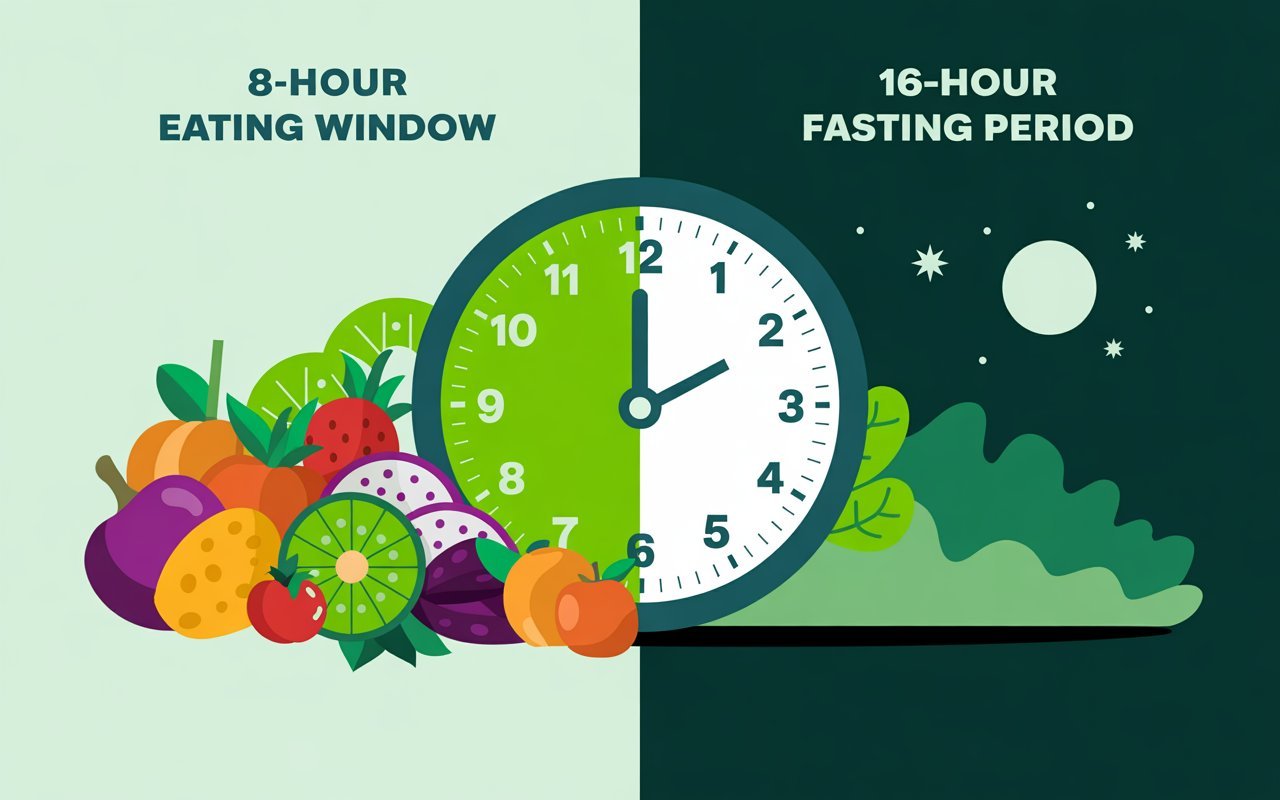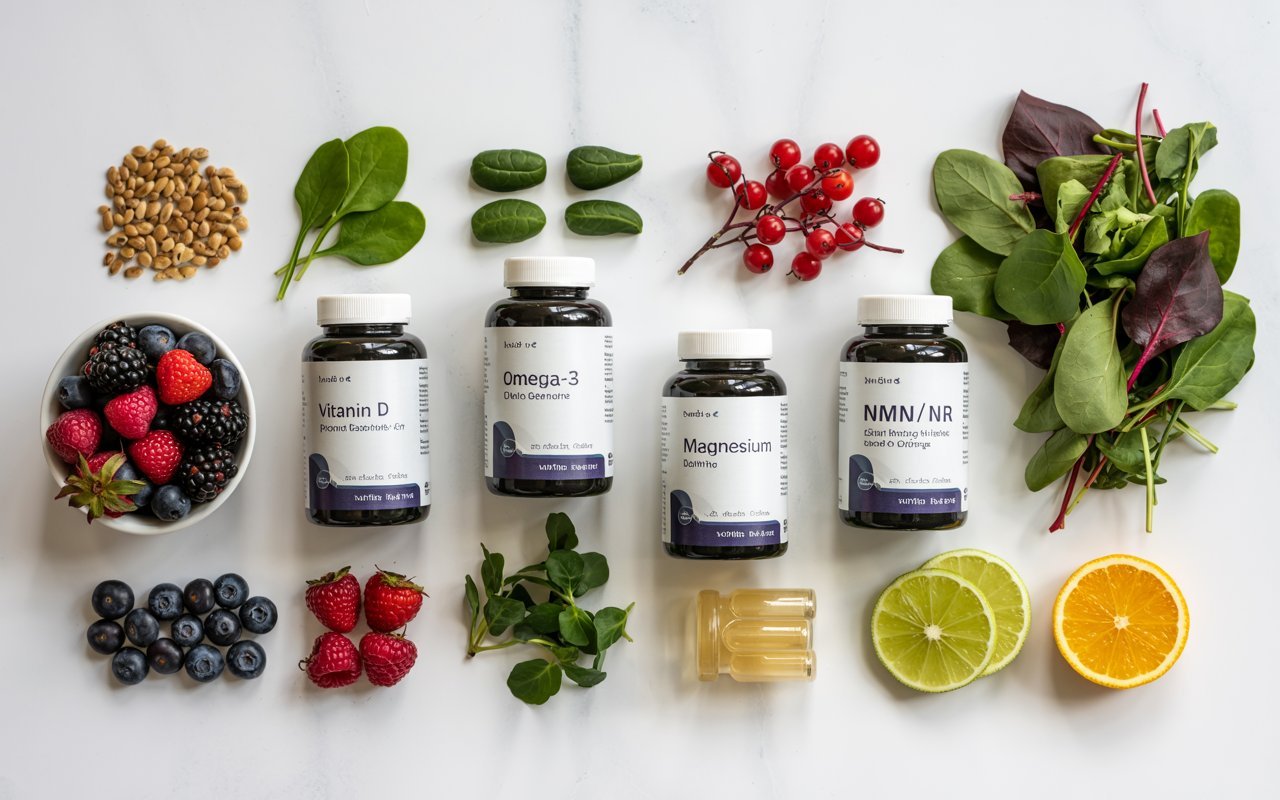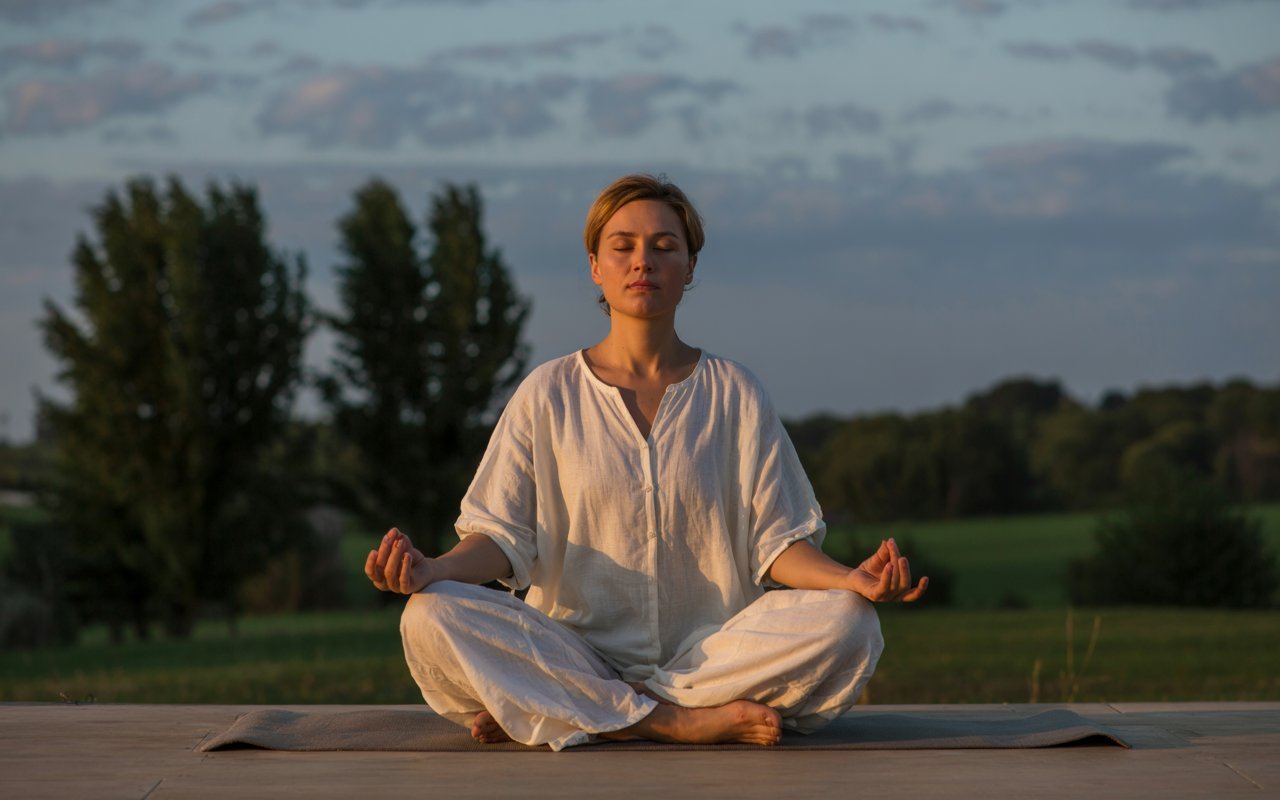7 Daily Biohacking Rituals to Slow Aging and Enhance Longevity
- Category- Lifestyle & Habits
Sign Up and Get a FREE 7-Day Healthy Habits Kickstart Challenge Guide!

This post may contain affiliate links, which means I may earn a commission if you click through and make a purchase at no additional cost to you.
Did you know that while human lifespan has increased dramatically, our health span – the number of years lived in good health – often lags behind? We might be living longer, but are we living better in those later years? This gap highlights a crucial desire: not just to add years to life, but life to years. Enter biohacking. Far from science fiction, biohacking is the art and science of taking control of your own biology, using strategic interventions – often simple, daily habits – to optimize physical and cognitive performance, slow the aging process, and enhance overall well-being. It’s a proactive approach grounded in understanding how our bodies work and leveraging that knowledge for better health outcomes. The magic lies not in drastic, one-off measures, but in the cumulative power of consistent, daily rituals. These small, intentional actions compound over time, creating significant positive shifts in our journey towards biohacking for longevity.
Here are seven evidence-based daily rituals you can incorporate to optimize your biology and promote a longer, healthier life:
1. Morning Sunlight Exposure: Reset Your Circadian Rhythm

- What It Is: Intentionally exposing your eyes and skin to natural sunlight within the first hour of waking, ideally without sunglasses initially.
- Why It Works: Morning sunlight is rich in blue and UVA light frequencies that signal directly to your suprachiasmatic nucleus (SCN), the body’s master clock in the brain. This helps:
- Suppress Melatonin: Quickly halts the production of the sleep hormone, promoting alertness.
- Trigger Cortisol Rise: Initiates a healthy morning cortisol peak, crucial for energy and focus (distinct from chronic stress-induced cortisol).
- Anchor Circadian Rhythm: Sets a clear start to your day, which improves sleep timing and quality later that night. Studies show proper circadian alignment impacts everything from metabolism to hormone regulation, key factors in aging. Dr. Andrew Huberman frequently emphasizes this as a foundational tool for optimizing sleep and wakefulness.
- Boost Mood: Sunlight exposure can increase serotonin levels.
- How to Do It:
- Timing: Aim for within 30-60 minutes of waking.
- Duration: 10-15 minutes on a sunny day, 20-30 minutes on a cloudy day.
- Method: Go outside. Face the direction of the sun (don’t stare directly at it). If you can’t go outside, sit near a large window, though direct outdoor light is more effective. Avoid wearing sunglasses during this initial exposure (contact lenses/glasses are fine).
- Pro Tip: Combine your morning sunlight with light movement, like a short walk or stretching. This further enhances cortisol regulation and blood flow, amplifying the wakefulness signal.
2. Time-Restricted Eating (TRE): Give Your Cells a Break

- What It Is: Consuming all your daily calories within a specific, consistent window of time each day (typically 8-10 hours), followed by a fasting period (typically 14-16 hours, including sleep).
- Why It Works: TRE isn’t primarily about what you eat, but when. During the fasting period, your body shifts metabolic gears:
- Lowers Insulin: Reduced insulin levels allow fat burning and reduce insulin resistance, a hallmark of aging and metabolic disease.
- Induces Autophagy: This cellular “clean-up” process removes damaged cells and proteins, regenerating newer, healthier cells. Yoshinori Ohsumi won the Nobel Prize in 2016 for his discoveries on autophagy mechanisms. It’s crucial for cellular rejuvenation and longevity.
- Improves Gut Health: Gives the digestive system a rest, potentially improving microbiome diversity and gut lining integrity.
- Supports Circadian Rhythms: Aligning eating with daylight hours reinforces the body’s natural cycles.
- How to Do It:
- Start Slowly: Begin with a 12-hour eating window (e.g., 8 AM to 8 PM) and a 12-hour fast. Gradually shorten the eating window if desired (e.g., 10 AM to 6 PM for a 16-hour fast).
- Consistency is Key: Try to maintain the same window daily, even on weekends, to support your circadian rhythm.
- Hydration: Drink plenty of water, black coffee, or plain tea during the fasting period. Avoid calories.
- Nutrient Density: Focus on whole, unprocessed foods during your eating window to maximize nutrient intake.
- Pro Tip: Try to finish your last meal at least 2-3 hours before bedtime. This allows digestion to complete before sleep, potentially improving sleep quality and further enhancing metabolic benefits.
3. Cold Exposure Therapy: Build Resilience and Boost Metabolism

- What It Is: Deliberately exposing your body to cold temperatures for short periods, typically through cold showers, ice baths, or cryotherapy.
- Why It Works: Cold exposure acts as a beneficial stressor (hormesis), triggering adaptive responses:
- Activates Brown Adipose Tissue (BAT): “Brown fat” burns calories to generate heat, potentially improving metabolism and insulin sensitivity.
- Reduces Inflammation: Cold can constrict blood vessels and decrease inflammatory markers.
- Boosts Norepinephrine: This neurotransmitter significantly increases focus, alertness, and mood. Dr. Rhonda Patrick often discusses the potent mood-enhancing effects of cold plunges due to this neurochemical surge.
- Builds Mental Resilience: Overcoming the discomfort of cold builds grit and stress tolerance.
- How to Do It:
- Cold Showers: Start with your regular warm shower, then turn the water to cold for the last 30 seconds. Gradually increase the duration up to 2-3 minutes. Focus on calm breathing.
- Ice Baths (Advanced): Fill a tub with cold water and add ice. Start with short durations (1-3 minutes) at moderately cold temperatures (around 50-60°F or 10-15°C) and gradually decrease temperature or increase time as tolerated. Caution: Consult a doctor first, especially if you have cardiovascular issues.
- Frequency: Aim for several times a week, or daily if taking cold showers.
- Pro Tip: Focus intently on slowing down your exhale during cold exposure. This activates the parasympathetic (rest-and-digest) nervous system, helping you stay calm and adapt faster.
4. Prioritize Deep Sleep: The Ultimate Cellular Repair Time

- What It Is: Optimizing both the quantity (7-9 hours for most adults) and quality (sufficient deep and REM sleep stages) of your nightly sleep.
- Why It Works: Sleep isn’t passive; it’s a critical period for restoration and rejuvenation:
- Brain Detoxification: The glymphatic system actively clears metabolic waste products (like amyloid-beta) from the brain during deep sleep, crucial for preventing neurodegenerative diseases.
- Hormone Regulation: Sleep impacts growth hormone (repair), cortisol (stress), insulin (metabolism), and leptin/ghrelin (hunger). Imbalances accelerate aging.
- Memory Consolidation: Essential for learning and cognitive function.
- Cellular Repair: Allows the body to repair tissues and reduce inflammation accumulated during the day. Poor sleep is consistently linked to shorter telomeres and increased biological age.
- How to Do It: Implement strong sleep hygiene:
- Consistent Schedule: Go to bed and wake up around the same time daily, even on weekends.
- Cool, Dark, Quiet Room: Optimize your sleep environment (ideal temperature around 60-67°F or 15-19°C). Use blackout curtains and earplugs/white noise if needed.
- Limit Blue Light: Avoid screens (phones, computers, TVs) for 1-2 hours before bed, or use blue light blocking glasses/apps.
- Wind-Down Routine: Engage in relaxing activities like reading a physical book, gentle stretching, meditation, or taking a warm bath before bed.
- Avoid Late Meals & Caffeine: Stop caffeine intake 8-10 hours before bed and heavy meals 2-3 hours before bed.
- Pro Tip: Consider tracking your sleep using a wearable device (like an Oura Ring or Whoop band) to understand your sleep stages and identify patterns or issues impacting your sleep quality. Use the data to tweak your routines.
5. Mindful Movement: More Than Just Exercise

- What It Is: Incorporating regular, varied physical activity throughout the day with an emphasis on awareness and listening to your body, rather than just punishing workouts.
- Why It Works: Movement is fundamental to health span and longevity:
- Maintains Muscle Mass: Combats age-related muscle loss (sarcopenia), crucial for metabolic health, strength, and preventing frailty.
- Improves Cardiovascular Health: Strengthens the heart, improves circulation, and helps regulate blood pressure.
- Boosts Brain Health: Increases Brain-Derived Neurotrophic Factor (BDNF), which supports neuron growth and cognitive function. Exercise is linked to reduced risk of dementia.
- Enhances Insulin Sensitivity: Helps muscles utilize glucose effectively.
- Reduces Stress & Inflammation: Releases endorphins and helps regulate cortisol.
- How to Do It:
- Variety: Combine different types of movement:
- Cardio/Zone 2: Activities like brisk walking, jogging, cycling where you can hold a conversation (aim for 150+ minutes/week).
- Strength Training: Using weights, resistance bands, or bodyweight exercises (2-3 times/week).
- Flexibility & Mobility: Stretching, yoga, or dynamic movements daily.
- Consistency: Aim for at least 30 minutes of moderate activity most days.
- Mindfulness: Pay attention to your body during movement. How does it feel? Where do you feel the effort? This enhances the mind-body connection.
- Listen to Your Body: Don’t push through sharp pain. Allow for rest and recovery.
- Variety: Combine different types of movement:
- Pro Tip: Practice “exercise snacking” – incorporate short bursts of activity throughout your day. Do 10 push-ups before a meeting, take the stairs, do 20 squats while waiting for coffee. These mini-movements add up significantly.
6. Strategic Supplementation: Filling Nutritional Gaps

- What It Is: Using specific dietary supplements thoughtfully to address potential nutrient deficiencies, support cellular pathways involved in aging, or enhance overall resilience, ideally based on testing and consultation.
- Why It Works: Even with a healthy diet, factors like soil depletion, individual genetics, and increased physiological demands can lead to gaps. Strategic supplementation can:
- Correct Deficiencies: Common deficiencies like Vitamin D, Magnesium, and Omega-3 fatty acids impact numerous health processes.
- Support Mitochondrial Health: Supplements like CoQ10 or PQQ can aid cellular energy production.
- Boost NAD+ Levels: Nicotinamide Adenine Dinucleotide (NAD+) is crucial for cellular energy and DNA repair, declining with age. Precursors like NMN (Nicotinamide Mononucleotide) or NR (Nicotinamide Riboside) aim to boost NAD+ levels, a key focus in biohacking for longevity research, heavily discussed by experts like David Sinclair.
- Reduce Oxidative Stress: Antioxidants like Vitamin C, E, or Glutathione support cellular defense.
- Support Methylation: B vitamins (especially folate, B12, B6) are critical for methylation, a process vital for DNA expression and repair.
- How to Do It:
- Test, Don’t Guess: Work with a healthcare provider (MD, ND, Functional Medicine Practitioner) to get blood tests assessing nutrient levels, inflammation markers, etc.
- Prioritize Foundational Nutrients: Ensure adequate intake of Vitamin D3 (with K2), high-quality Omega-3s (EPA/DHA), and Magnesium.
- Consider Longevity Pathways: Discuss potential benefits and risks of NAD+ precursors (NMN/NR), Resveratrol, or other compounds with your provider based on your health status and goals.
- Focus on Quality & Purity: Choose reputable brands with third-party testing.
- Start Low, Go Slow: Introduce new supplements one at a time to monitor effects.
- Pro Tip: Consider cycling certain supplements (taking breaks) or adjusting dosages based on seasonal changes (e.g., higher Vitamin D in winter) or changes in your lifestyle/stress levels, always under guidance.
7. Stress Management Practice: Tame the Cortisol Monster

- What It Is: Intentionally incorporating daily practices designed to downshift the nervous system from a sympathetic (fight-or-flight) state to a parasympathetic (rest-and-digest) state.
- Why It Works: Chronic stress is a major driver of aging, contributing to:
- Elevated Cortisol: Disrupts sleep, promotes fat storage (especially visceral fat), impairs immune function, and breaks down tissues over time.
- Increased Inflammation: Systemic inflammation underlies most chronic age-related diseases.
- Telomere Shortening: Chronic stress has been linked to accelerated shortening of telomeres (protective caps on DNA), a marker of biological aging.
- Impaired Cognitive Function: Affects memory, focus, and decision-making.
- Daily stress management practices help counteract these effects, building resilience and promoting a calmer, healthier internal state.
- How to Do It:
- Choose a Practice: Find what resonates with you:
- Meditation: Mindfulness, guided meditation, transcendental meditation (5-20 minutes daily). Apps like Calm or Headspace can help.
- Breathwork: Techniques like box breathing (inhale 4s, hold 4s, exhale 4s, hold 4s) or physiological sigh (two quick inhales through the nose, long exhale through the mouth).
- Journaling: Expressing thoughts and emotions can be highly cathartic.
- Nature Exposure: Spending time in green spaces has proven stress-reducing effects.
- Yoga or Tai Chi: Combine movement with breath and mindfulness.
- Consistency: Aim for at least 5-15 minutes daily. Even short, consistent sessions are powerful.
- Schedule It: Treat it like an important appointment.
- Choose a Practice: Find what resonates with you:
- Pro Tip: Use a Heart Rate Variability (HRV) tracking device (available on many wearables or as standalone apps) during or after your stress management practice. Higher HRV generally indicates better stress resilience and nervous system balance. Monitoring HRV can provide objective feedback on how well your chosen techniques are working.
The Supporting Science of Biohack for Longivity
The field of biohacking for longevity isn’t just based on anecdotal evidence; it draws heavily from ongoing scientific research into aging biology. Key areas include:
- Circadian Biology: Research by scientists like Dr. Satchin Panda (Salk Institute) demonstrates how aligning our sleep, eating, light exposure, and activity patterns with our internal clocks profoundly impacts metabolic health, gene expression, and aging. Disrupting these rhythms is linked to accelerated aging and disease.
- Autophagy and Cellular Health: As mentioned, Yoshinori Ohsumi’s Nobel Prize-winning work highlighted autophagy’s role in clearing cellular debris. Practices like Time-Restricted Eating are believed to enhance this process, promoting cellular rejuvenation.
- NAD+ Metabolism: David Sinclair, Ph.D. (Harvard Medical School), author of “Lifespan,” is a leading voice on the role of sirtuins (longevity genes) and NAD+ in aging. His research suggests that declining NAD+ levels contribute to age-related decline and that boosting NAD+ (e.g., via precursors like NMN or NR) may help counteract aspects of aging. He posits an “information theory of aging,” where loss of epigenetic information drives aging, and strategies to maintain NAD+ help preserve this information.
Conclusion
Embracing biohacking for longevity doesn’t require a futuristic lab or extreme measures. As we’ve explored, significant strides can be made through consistent, daily rituals grounded in science. From optimizing your sleep and harnessing the power of morning sunlight to incorporating time-restricted eating, mindful movement, cold exposure, strategic supplementation, and stress management, these seven habits form a powerful toolkit. Each ritual builds upon the others, creating a synergistic effect that helps slow the aging process at a cellular level, enhance your daily vitality, and importantly, extend your health span. The journey of biohacking for longevity begins with small, intentional steps taken daily. Start with one or two rituals that resonate most, practice them consistently, and gradually build your personalized longevity protocol. You have more control over your aging process than you might think.
RELATED POSTS


